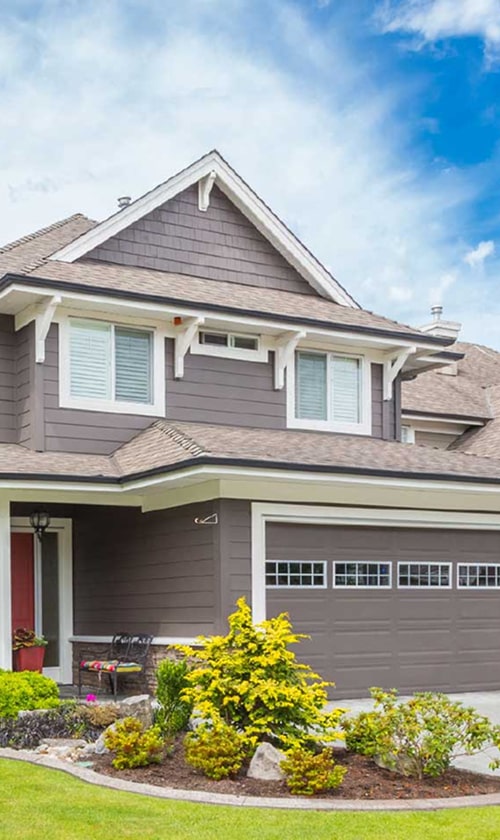Breathing clean air inside our homes and workplaces is not always guaranteed. Dust, allergens, and pollutants can build up indoors and affect how we feel every day. Installing an indoor air quality system improves comfort and supports better health by reducing harmful particles and keeping the air fresh.

We often think about heating and cooling but overlook the air we breathe. A well-designed system goes beyond temperature control and helps create a healthier environment. By understanding the role of these systems, we can make choices that improve both daily comfort and long-term well-being.
As we look at the importance of indoor air quality, the technology behind these systems, and how to maintain them, we will see how small changes can make a noticeable difference. This approach helps us protect our health while making our living spaces more comfortable.
The Importance of Indoor Air Quality Systems
Indoor air quality systems help us reduce pollutants, manage humidity, and create a healthier indoor environment. They support respiratory health, lessen allergy triggers, and improve comfort in both homes and workplaces.
Defining Indoor Air Quality and Its Impact
Indoor air quality (IAQ) refers to the condition of the air inside our living and working spaces. It includes factors such as pollutant levels, ventilation, humidity, and temperature. Poor IAQ often comes from dust, mold, pet dander, smoke, or chemical emissions from cleaning products and building materials.
When IAQ declines, we notice symptoms like coughing, headaches, or eye irritation. Long-term exposure can increase the risk of asthma or other respiratory issues. Children, older adults, and people with existing health conditions are especially sensitive to poor air.
By installing air quality systems, we can filter out harmful particles and maintain balanced humidity. This creates an environment that supports our health and reduces the strain on our respiratory system.
Health Benefits of Improved Indoor Air
Cleaner indoor air directly supports our respiratory health. Systems that filter pollutants and allergens reduce the triggers that cause asthma attacks or allergy flare-ups. This makes it easier for us to breathe and lowers the chance of developing long-term respiratory problems.
Better IAQ also reduces the spread of airborne irritants and pathogens. For example, filtration systems can trap fine particles, while humidity control prevents mold growth. Both are important for keeping our indoor spaces safe and healthy.
We also benefit from fewer sick days and less discomfort from symptoms like congestion or throat irritation. By managing air quality, we protect our health in ways that medicines alone cannot.
Comfort and Productivity Enhancements
Good air quality does more than protect health—it also improves how we feel and function each day. Balanced humidity prevents dry skin and eye irritation, while steady airflow reduces stuffiness and odors. These small changes make our spaces more comfortable.
Cleaner air helps us focus better. Studies show that people in environments with fewer pollutants report higher concentration and less fatigue. This is especially important in workplaces and schools where productivity matters.
We also sleep better when the air is clean and fresh. Restful sleep supports both comfort and overall well-being, making IAQ an important factor in daily life.
Key Components and Technologies in Indoor Air Quality System Installation

We improve indoor air by focusing on how air moves, how it is cleaned, and how moisture levels stay balanced. Each part of the system works together to reduce dust, pollen, mold spores, and other pollutants that affect comfort and health.
Ventilation Strategies and Solutions
We use ventilation to bring in fresh outdoor air and push out stale indoor air. Proper ventilation lowers concentrations of carbon dioxide, volatile organic compounds (VOCs), and odors. It also supports better performance of heating and cooling equipment.
There are several approaches:
- Natural ventilation through windows or vents
- Mechanical ventilation with fans and ducts
- Balanced systems that combine intake and exhaust
In modern HVAC systems, we often install energy recovery ventilators (ERVs) or heat recovery ventilators (HRVs). These units exchange heat between incoming and outgoing air, reducing energy loss while maintaining airflow.
Good ventilation also helps manage humidity and prevents buildup of mold spores. By keeping air moving, we reduce the presence of allergens like dust and pet dander.
Advanced Filtration Methods
Filtration removes fine particles and allergens that ventilation alone cannot handle. We rely on filters inside HVAC systems to trap dust, pollen, and other airborne matter.
HEPA filters are a common choice because they capture particles as small as 0.3 microns, including many mold spores and some bacteria. For homes with pets, these filters also reduce pet dander in circulation.
We also use activated carbon filters to absorb VOCs and odors from cleaning products, paints, or cooking. In some cases, layered filter systems combine particle capture with odor removal for broader protection.
Regular replacement is critical. A clogged filter reduces airflow, strains AC units, and lowers efficiency. We recommend checking filters every 1–3 months depending on system use and indoor conditions.
Humidity Control Systems
Humidity affects both comfort and health. Too much moisture encourages mold growth, while air that is too dry can irritate skin and airways.
We install humidifiers to add moisture and dehumidifiers to remove excess. Many modern HVAC systems integrate these functions directly.
Ideal indoor humidity stays between 30% and 50%. At this level, dust mites and mold spores have less chance to thrive, and viruses spread less easily.
Smart controls can track humidity in real time and adjust automatically. This makes it easier to maintain stable conditions without constant manual changes.
Air Purification Technologies
Air purifiers add another layer of protection beyond filters and ventilation. These devices target smaller particles and biological contaminants.
UV-C light systems can deactivate certain bacteria, viruses, and mold spores as air passes through HVAC ducts. Ionizers release charged particles that cause pollutants to clump and fall out of the air.
We also use portable air purifiers with HEPA filters for specific rooms. These units are useful in bedrooms or offices where extra protection is needed.
Some systems combine purification with filtration and humidity control. By layering these technologies, we reduce a wide range of airborne pollutants, from VOCs to fine particles.
Optimizing System Performance and Maintenance
We keep indoor air systems working well by focusing on routine care, timely filter changes, and accurate monitoring. These steps help maintain consistent airflow, reduce energy consumption, and support healthier indoor environments.
Regular HVAC Maintenance Practices
We improve system reliability by scheduling regular HVAC maintenance. A typical schedule includes seasonal inspections before peak heating and cooling periods. This allows us to check refrigerant levels, test thermostat accuracy, and inspect electrical connections.
Cleaning coils and checking ductwork prevents dust buildup and airflow restrictions. These tasks reduce strain on the system and help lower energy consumption.
We also track performance records over time. Keeping notes on service dates, part replacements, and efficiency readings helps us identify patterns and address issues early. This approach reduces unexpected breakdowns and extends equipment life.
Filter Replacement and Upkeep
Air filters collect dust, pollen, and other particles that affect both air quality and system performance. When filters clog, airflow drops, and the system works harder, which increases energy use.
We replace filters based on manufacturer guidelines, often every 1–3 months. In homes with pets or high dust levels, replacement may need to happen more often.
Using the right filter type is important. HEPA filters capture very fine particles, while MERV-rated filters balance efficiency with airflow needs. We choose filters that match the system’s capacity to avoid unnecessary strain.
A simple schedule, such as checking filters on the first day of each month, helps us stay consistent. Clean filters keep both air quality and energy efficiency at stable levels.
Monitoring Indoor Air Quality with Real-Time Data
We use real-time data tools to track conditions like humidity, particulate matter, and CO₂ levels. These readings show us how well the system maintains healthy indoor air.
Smart sensors connect to mobile apps or building management systems. This allows us to see changes quickly and adjust settings when needed.
Real-time data also helps us measure energy efficiency. By comparing air quality readings with system performance, we can fine-tune ventilation and reduce unnecessary energy consumption.
This monitoring approach provides immediate feedback and supports more informed decisions about maintenance and upgrades.
Addressing Indoor Pollutants and Health Risks
We face many pollutants inside our homes that can affect breathing and overall comfort. By targeting allergens, mold, chemical vapors, and airborne viruses, we can create a safer indoor space for everyone.
Managing Allergens and Particulates
Dust, pollen, and pet dander are common allergens that build up indoors. These particles often settle on furniture, carpets, and air ducts, making them difficult to remove with cleaning alone.
We can reduce exposure by using high-efficiency filters that trap small particles before they circulate. Regular vacuuming with a HEPA filter and frequent washing of bedding also help limit buildup.
Air quality systems with multi-stage filtration provide an added layer of protection. They capture fine particulates that standard filters often miss, lowering the risk of allergic reactions and improving day-to-day comfort.
Controlling Mold, VOCs, and Viruses
Mold spores thrive in damp areas like bathrooms, basements, and around leaky pipes. Once airborne, they can spread quickly and trigger breathing problems. Keeping humidity between 30–50% with dehumidifiers or ventilation systems helps prevent growth.
Volatile organic compounds (VOCs) come from paints, cleaning products, and new furniture. These gases can cause headaches, irritation, or fatigue. Activated carbon filters and proper ventilation reduce VOC buildup and keep indoor air safer.
Viruses spread through droplets and fine particles. Advanced air systems with UV-C light or ionization technology can neutralize many airborne pathogens. This reduces the chance of transmission, especially in shared living spaces.
Reducing Respiratory Issues in Sensitive Individuals
People with asthma, allergies, or chronic lung conditions often react more strongly to indoor pollutants. Even small amounts of dust or mold spores can trigger symptoms like coughing, wheezing, or shortness of breath.
We can support these individuals by combining air purification, humidity control, and regular cleaning. For example:
- Use HEPA filters to capture allergens
- Maintain balanced humidity to prevent mold
- Limit chemical cleaners that release VOCs
By addressing these factors, we lower respiratory stress and make indoor air easier to breathe. This creates a healthier environment for those most at risk.




